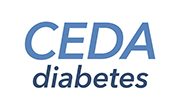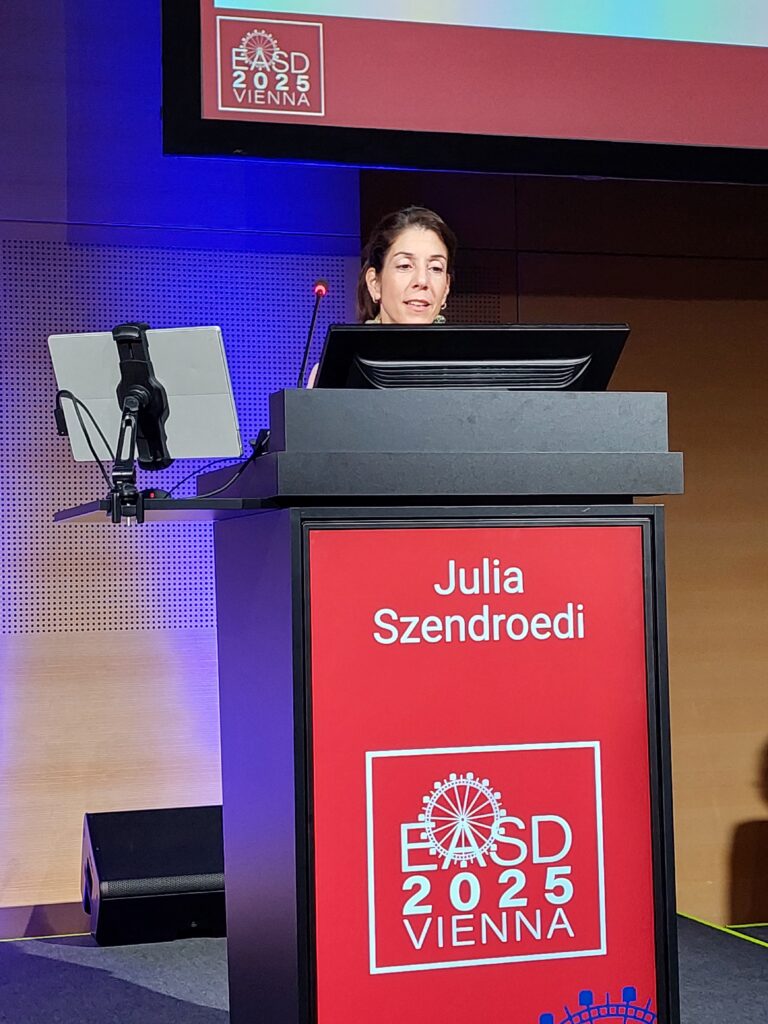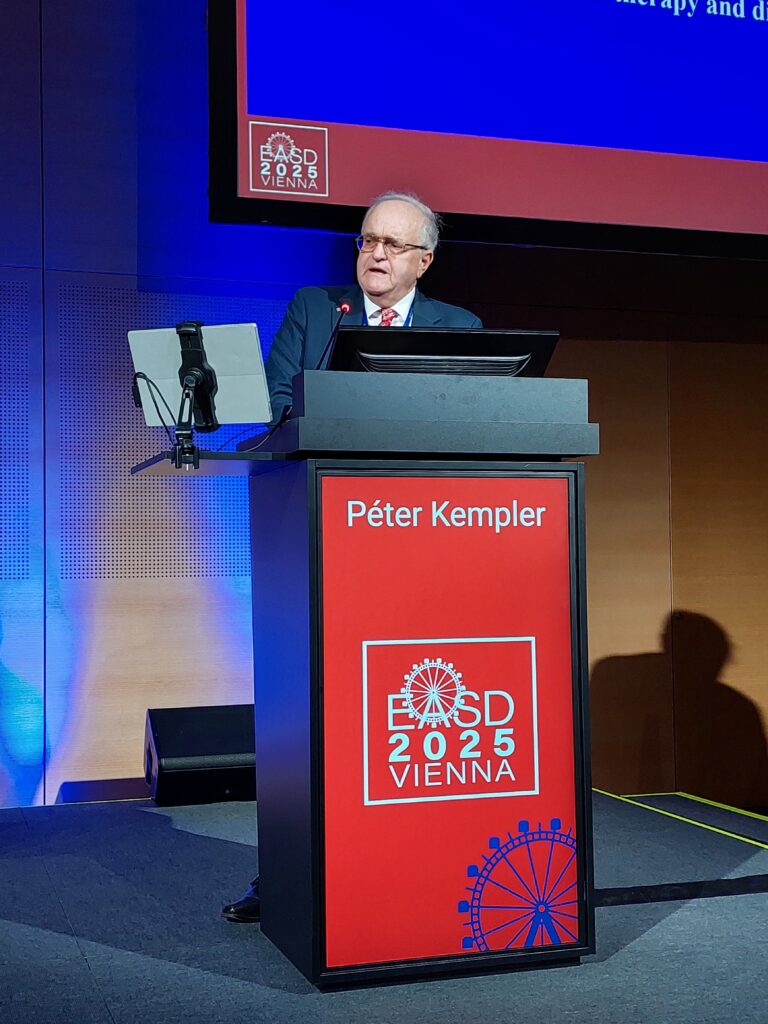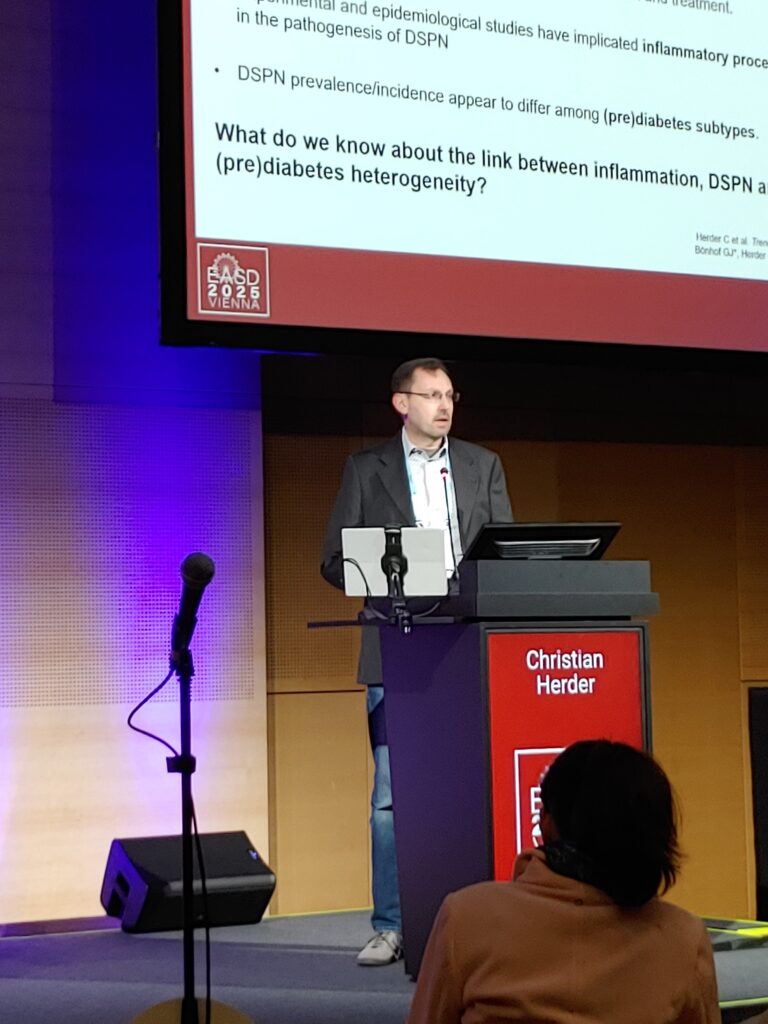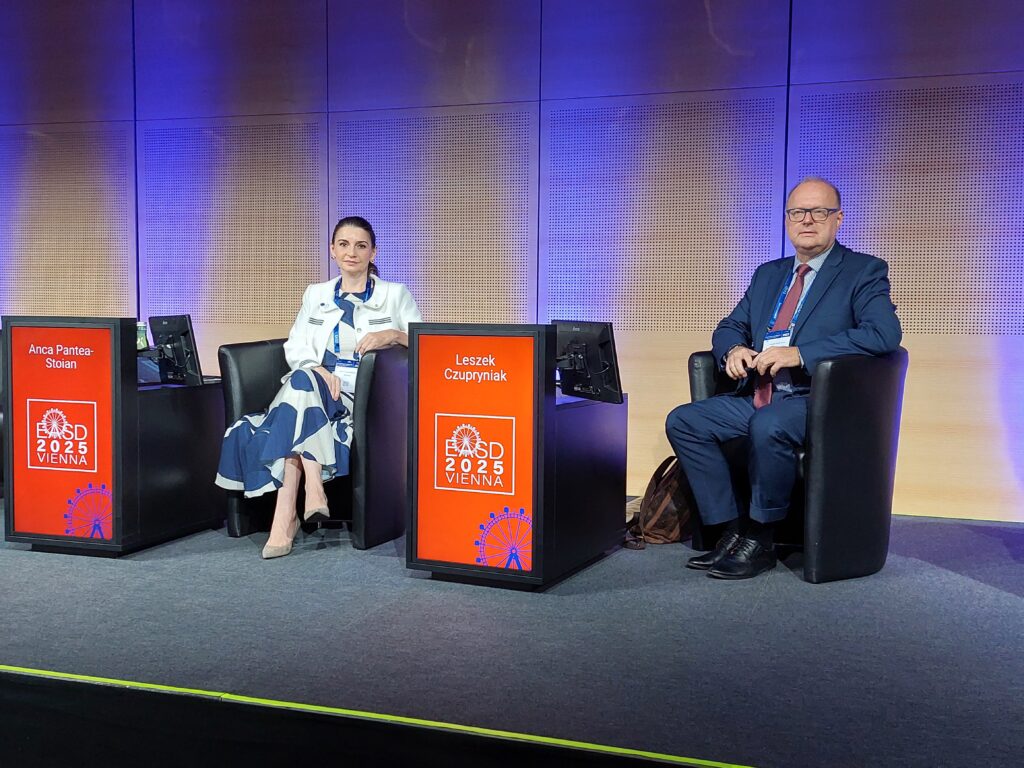
This year‘s 61st Annual Meeting of the European Association for the Study of Diabetes (EASD) was held in Vienna, Austria on September 15-19, 2025 with nearly 14,000 participants from more than 130 countries. The programme included a joint EASD-CEDA symposium entitled “Diabetic neuropathies in the era of precision medicine“ which was very well attended. Session chairs were Professor Leszek Czupryniak (Warsaw, Poland; EASD Global Council advisor) and Professor Anca Pantea Stoian (Bucharest, Romania; CEDA vice president and EASD Global Council member).
Professor Julia Szendroedi (Heidelberg, Germany) started the session with a discussion of prediabetic polyneuropathy. She higlighted the remarkable prevalence of polyneuropathy in people with prediabetes and the relevance of quantitative sensory testing for its diagnosis. Prediabetic neuropathy is influenced by multiple metabolic risk factors, especially dyslipidaemia, and oxidative stress. Novel diagnostic tools include magnetic resonance neurography for the morphological analysis of neuronal lesions. Longitudinal cohorts are necessary for a better understanding of underlying mechanisms, improved screening and phenotyped-based management.
Professor Péter Kempler (Budapest, Hungary) continued with an update on cardiovascular autonomic neuropathy (CAN). He emphasised the clinical relevance of CAN by presenting data on the relationship between CAN and mortality risk in people with diabetes. Of note, the ACCORD study demonstrated an increase in all-cause mortality by intensive glucose control, and a previous history of neuropathy was the strongest independent predictor of mortality among people in the intensive therapy arm. CAN was also associated with an increased risk of heart failure in a recent study. The diagnosis of CAN remains challenging in clinical practice and should be based on four cardiovasacular reflex tests whereas the handgrip test has no additional diagnostic value. Pathogenetic oriented therapy for diabetic neuropathy is still not widely available and/or used. However, alpha-lipoic acid and benfotiamine are relevant treatment options for diabetic neuropathy and show clinical benefits with respect to cardiovascular outcomes and mortality risk.
In the final talk, Professor Christian Herder (Düsseldorf, Germany) discussed the relationship between inflammation, diabetes heterogeneity and polyneuropathy. Analyses in the KORA study showed that a multimarker approach could identify multiple novel inflammation-related biomarkers for incident distal sensorimotor polyneuropathy (DSPN) probably reflecting a cross-talk between multiple cell types from innate immunity and adaptive immunity. Recent studies investigated the phenotypic heterogeneity of people both with diabetes and before the diagnosis of diabetes. Novel diabetes subtypes and prediabetes clusters differ in their level of subclinical inflammation (highest in severe insulin resistant diabetes and cluster 5, respectively). Differences in DSPN risk parallel a high inflammatory load in people before diabetes diagnosis for cluster 5. An ongoing clinical trial investigates the role of NLRP3 inflammasome inhibition as an anti-inflammatory approach in people with type 2 diabetes. The identification of subtypes of people with (pre)diabetes with the highest inflammatory burden may help develop novel precision medicine approaches for DSPN.
CEDA thanks the EASD for the opportunity to organise this joint symposium, and we are looking forward to future scientific discussions.
Prof. Dr. Christian Herder
